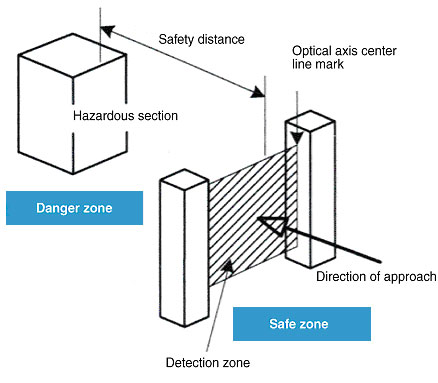What is a safety distance?
Minimum Distance from the Detection Zone to the Danger Zone
The safety distance is the minimum distance that the Safety Sensor must be separated from a hazardous section in a machine in order to stop operation of the hazardous section before a person or object reaches it. The method for calculating this safety distance depends on the standards for each country and the standards for individual machines, so always refer to the relevant standards before using machinery.